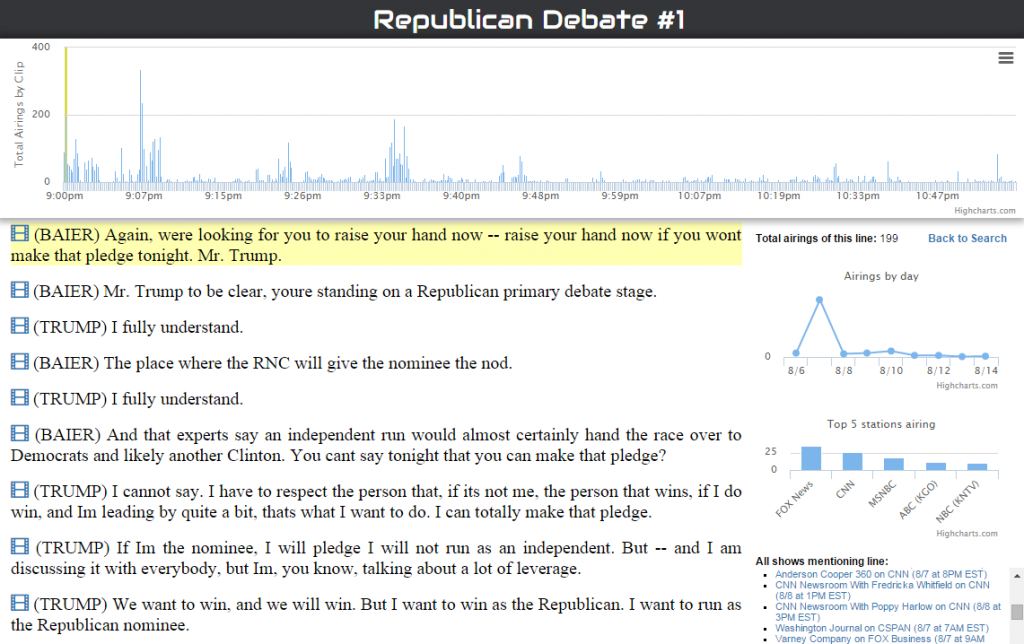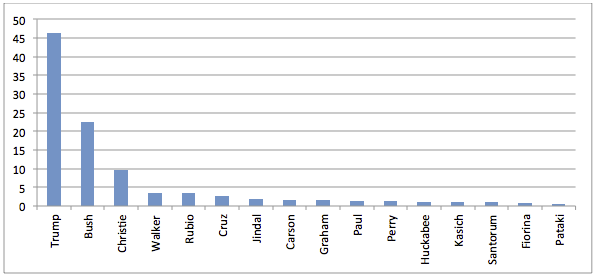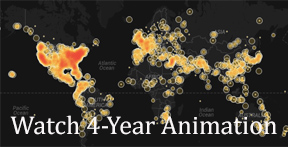Hot off the internet presses, here is media analyst’s Kalev Leetaru’s visualization tool, fueled by Internet Archive data, which enables users to trace particular phrases used in broadcast news coverage in the first 24 hours after would-be presidential nominees appeared in the first Democratic debate of the 2016 election.
Scroll down and what sticks out immediately are the two subjects that captured most of the news broadcasters’ attention: “Bernie Sanders’ “damn emails” quote and guns.
When the subject came up of the controversy over Clinton’s decision to do public work from a private email server, rather than attack Clinton, Sanders defended her:
“Let me say — let me say something that may not be great politics. But I think the secretary is right, and that is that the American people are sick and tired of hearing about your damn e-mails.”
According to Internet Archive data, that sound bite aired 496 times across stations.
The other issue that grabbed attention was gun violence: Sanders, who hails from gun-friendly rural Vermont, was called to task for his vote to make it tougher to hold gun manufacturers liable when the guns they make are used in a crime. Answering a question by CNN moderator Anderson Cooper, on whether Sanders is tough enough on guns, Clinton said:
“No, not at all. I think that we have to look at the fact that we lose 90 people a day from gun violence. This has gone on too long and it’s time the entire country stood up against the NRA. The majority of our country…(APPLAUSE)… supports background checks, and even the majority of gun owners do.”
This clip aired 260 times across stations.
However, these are just the top take-aways from this massive data crunching tool. It provides a search mechanism for the user to do deeper dives into the data and discover trends across and within certain types of news broadcasts.
Leetaru’s own analysis is here, on the Washington Post’s Monkey Cage. Among his observations:
There was also variation in how much attention each network paid to each candidate (you can see for yourself using the interactive visualization). Telemundo favored Sanders with 41 percent, followed by O’Malley with 24 percent and Clinton at just 21 percent, though admittedly, they broadcast a relatively small number of excerpts. FOX Business also favored Sanders 50 percent to Clinton’s 38 percent, as did CSPAN with Sanders at 52 percent to Clinton’s 44 percent. All other networks favored Clinton, though sometimes by a relatively close margin — like CNBC (50 percent Clinton to 43 percent Sanders) or PBS affiliates (41 percent Clinton to 38 percent Sanders).
This tool is also part of the Internet Archive’s testing of technology that we’ll use in our new Knight Foundation funded project to track political TV ads in key primary states, which will launch in early December.
Dig in and have fun.






